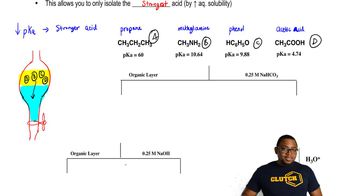Here are the essential concepts you must grasp in order to answer the question correctly.
Stratospheric Ozone Layer
The stratospheric ozone layer is a region of Earth's atmosphere that contains a high concentration of ozone (O3) molecules. It plays a crucial role in absorbing the majority of the sun's harmful ultraviolet (UV) radiation, protecting living organisms on Earth. The depletion of this layer can lead to increased UV exposure, resulting in adverse effects on human health and ecosystems.
Recommended video:
Halons and Their Chemical Stability
Halons are a class of halogenated hydrocarbons that contain bromine and are known for their chemical stability and low reactivity. This stability allows them to persist in the atmosphere for long periods, enabling them to reach the stratosphere. Once there, halons can undergo photodissociation, releasing bromine atoms that are highly effective at catalyzing the breakdown of ozone molecules.
Recommended video:
Intepreting the Band of Stability
Ozone Depletion Mechanism
The mechanism of ozone depletion involves the release of reactive halogen species, such as bromine, which catalyze the destruction of ozone in the stratosphere. A single bromine atom can destroy thousands of ozone molecules through a series of reactions, leading to significant thinning of the ozone layer. This process is exacerbated by the presence of UV radiation, which initiates the breakdown of halons and releases the reactive halogen atoms.
Recommended video:
Reaction Mechanism Overview
 Verified step by step guidance
Verified step by step guidance

